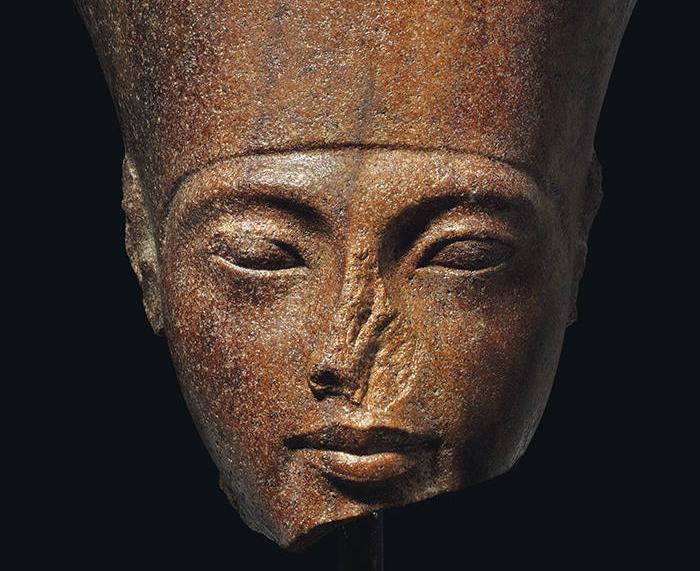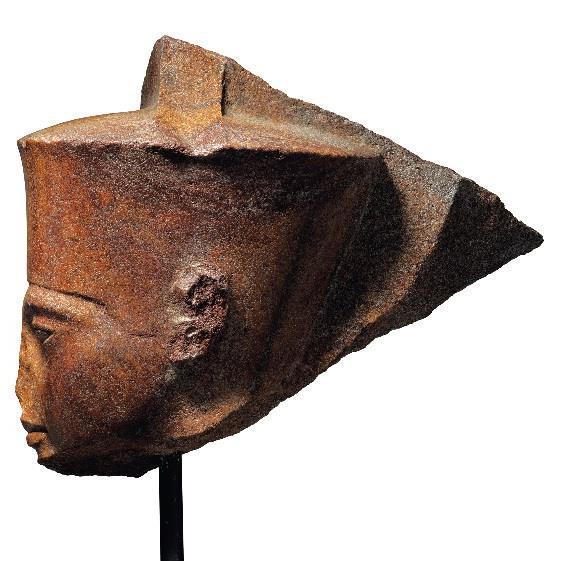The facial features – the full mouth with slightly drooping lower lips, and almond-shaped, slanted eyes, with a deep depression between the eyes and eyebrows – are those of Tutankhamen. Similar representations of the God Amen also with facial features of the young king, were carved for the temple of Karnak in Upper Egypt, as part of the royal restoration program.
The young pharaoh comes to life thanks to the particularly naturalistic depiction of the face inherited from the Amarna Period, which appeared during the reign of his father Akhenaton. This piece exudes strength and serenity, a testament to the craftmanship of Amarna sculptors.
Tutankhamen was 9 years old when he became Pharaoh, and reigned between 1333 and 1323 B.C., one of the last kings of the 18th Dynasty. This period is considered the golden age of ancient Egypt, not only in terms of regional and cultural influence, but also because of the incomparable beauty and quality of the art produced then. Tutankhamen is the most famous Egyptian Pharaoh in history thanks to the phenomenal discovery of his intact tomb in the Valley of the Kings in 1922 by Howard Carter and Lord Carnarvon.
The present lot was acquired from Heinz Herzer, a Munich-based dealer in 1985. Prior to this, Joseph Messina, an Austrian dealer, acquired it in 1973-74 from Prinz Wilhelm von Thurn und Taxis who reputedly had it in his collection by the 1960s.




























